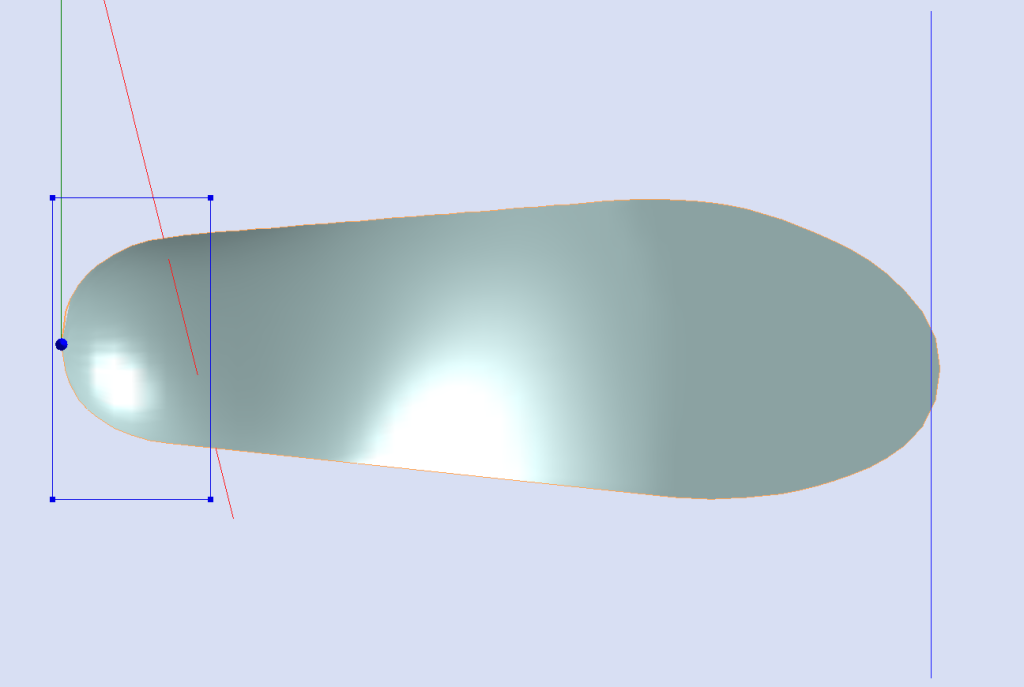Heel Cup Adjustments
The Heel Cup adjustment allows a user to increase or decrease the internal width of the heel, while also having a minor effect on heel cup height.
The Minimum is -50% and the Maximum is +50%.
Area of Application:

It is not recommended that this adjustment be used to increase heel height. This is better suited for narrowing, or widening the internal heel cup. If you would like to increase heel height we recommend reading about the Orthosis Width (US Foot Size) prescription variables on the Shoe Fitting page of LaserCAM Prescribe.
A positive percentage represents a decrease in the internal diameter of the heel cup and an increase in the height of the heel cup within the area of application.
You should consider the other variables being intrinsically added to the rearfoot, as well as top cover thickness. These can have a negative impact on orthosis fitting clinically.
A negative percentage represents an increase in the internal diameter of the heel cup and a decrease in the height of the heel cup within the area of application.
A negative value can help to allow for fat pad expansion during weight bearing, however this will lower heel cup height.
